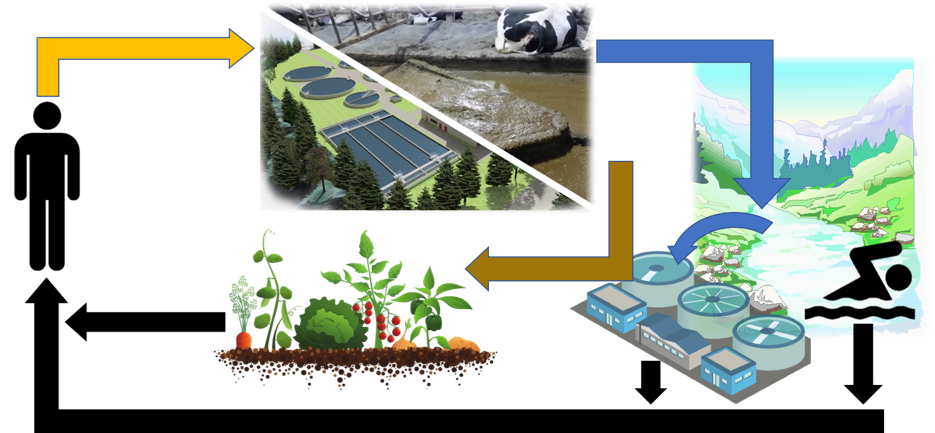Faculty advisors: Krista Wigginton, Lutgarde Raskin, Melissa Duhaime
PhD students: Emily Crossette, Kathryn Langenfeld
Undergraduate students: Michael Mata, Ariel Roy

The CDC estimates that antibiotic resistant bacteria infect at least 2 million people per year in the United States alone. Quantifying risks of environmental antibiotic resistance is complicated because bacteria may spread genes that confer resistant phenotypes, or antibiotic resistance genes (ARGs), to other bacteria via horizontal gene transfer mechanisms. We know that these ARGs are ubiquitous in the environment and engineered systems, harbored within different forms of DNA including plasmids, extracellular DNA fragments, and bacteria or phage genomes. We employ high-throughput, quantitative sequencing methods to compare environmental loading of ARGs from animal husbandry and wastewater treatment effluents. These methods will provide insight on the absolute abundance of ARGs, bacteria species, and phage species and evaluate if ARGs are enriched in mobile genetic elements, bacteria, or phages throughout manure and wastewater treatment processes.
Funding: USDA Evaluating Different Manure Management Practices in Controlling Spread of Antimicrobial Resistance from Dairy Farms (Grant # 2016-68003-24601), NSF PIRE: Halting Environmental Antimicrobial Resistance Dissemination (Award # 1545756), NSF Graduate Research Fellowship Program, University of Michigan Integrated Training in Microbial Systems (ITiMS) Fellowships
Contact: [email protected], [email protected]
